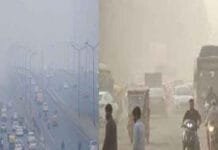
INVC NEWS
New Delhi — : Record-breaking heat continues to wreak havoc across India in June 2025, pushing cities and villages into survival mode. With temperatures soaring above 45°C in several regions, severe heatwaves are not just impacting daily life—they are quietly taking lives. But the real crisis lies in the shadows: no one knows exactly how many people have died. The flawed death-reporting system in the country is not only underestimating the toll, it’s also denying families critical compensation and recognition.
Thousands Dying, But Where Are the Numbers?
The ground reality is grim—people are collapsing, hospital emergency wards are overflowing, and families are losing loved ones to heatstroke. But if you look at the official numbers, the picture is confusing at best and misleading at worst. Three different national agencies are reporting three entirely different death tolls—creating chaos in data, planning, and public accountability.
From 2015 to 2022, the National Centre for Disease Control (NCDC) documented 3,812 heat-related deaths, while the National Crime Records Bureau (NCRB) listed 8,171 deaths for the same period. Meanwhile, the India Meteorological Department (IMD) reported just 3,436 deaths in its annual bulletins.
These conflicting numbers are more than statistical errors—they are signs of a deeply broken system that is costing lives.
Why the Death Count Differs So Drastically
Each agency collects data using different methods, and none of them align. The NCDC logs deaths of those who seek medical help and are admitted to hospitals. If someone dies outside and is taken directly for post-mortem, that data is passed to the forensic department, and rarely makes it to NCDC records.
Meanwhile, the NCRB’s data includes bodies found in public places, at home, or unidentified deaths, logged by police departments. An official from Delhi Police stated that NCRB figures often represent unclaimed or unattended deaths, which could be due to heat, but are not always investigated in detail.
For example, in 2022:
NCRB reported 730 heat deaths
NCDC reported only 33
IMD figure hovered around a few hundred
Clearly, India lacks a unified system to trace, classify, and confirm heat-related deaths—leaving major gaps in action and awareness.
Manual Entry, Overworked Staff, and Lost Data
A major hurdle in capturing accurate data is the manual nature of reporting. Despite having digital tools like the Integrated Health Information Platform (IHIP), frontline hospitals still fill out heat-death forms by hand, often understaffed and overloaded with patients. In this chaos, heatstroke cases are missed or misclassified as heart failure, dehydration, or natural causes.
A senior doctor from a Delhi hospital said bluntly:
“We’re short of hands. Even if the system is there, who will enter the data? Many times, cases don’t get reported at all.”
In some hospitals, staff reportedly downplay numbers fearing that higher death counts may result in compensation obligations or government scrutiny.
Compensation Denied, Voices Silenced
The consequences of under-reporting are devastating for families. Without official recognition of a heat-related death, no compensation is offered. Families not only grieve but also struggle financially, especially in rural areas where a single breadwinner’s loss can push the household into poverty.
Furthermore, state-level disaster relief planning is based on these official numbers. So if the numbers are wrong, so are the budgets, relief measures, and medical preparedness.
Experts Call for a Dedicated Department
Health experts, scientists, and climate activists are now demanding urgent intervention. Abhiyant Tiwari, Head of Climate Resilience and Health at NRDC India, stressed that heat-related deaths are undercounted globally, but India’s situation is especially severe. He suggested forming a separate heat-death registry, or even a dedicated agency, to track and report accurately.
Similarly, Avinash Chanchal of Greenpeace South Asia urged the government to revamp the entire heat-death reporting mechanism, calling it “deeply flawed and misleading.” He emphasized that as long as reporting remains broken, India will never understand the true toll of climate change on its population.
Until the System Is Fixed, India Will Remain Blind to the Real Heatwave Crisis
As of June 2025, India is battling more than just extreme temperatures. It is battling a crisis of accountability. People are dying silently, the government is planning blindly, and families are being left to suffer alone. With temperatures rising and the climate crisis accelerating, fixing India’s heat-death reporting system is not a choice—it’s a matter of life and death.













